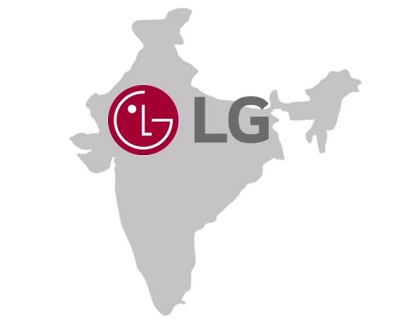This is a direct reflection of the company’s expansion in the massive Indian smartphone marketplace.
LG Electronics India has now announced its intentions to double the number of mobile devices it will have to offer in 2016, as it plans to launch about 15 different smartphones across a range of different price points.
The new mobile phone offerings are meant to boost its overall revenue through mobile sales sources.
At the moment, LG Electronics brings in about 7 to 8 percent of its overall revenue through the sale of mobile devices in India. It currently sells about 13 models of cell phones in the country. That said, the sales that it has seen have been considered to be disappointing and the company is hoping to change that situation dramatically.
According to Ki Wan Kim, the managing director of LG Electronics India, “This year, performance of our mobile business has been disappointing. We will launch around 15 mobile models next year. In three years time, my target is to make all our product categories to contribute equally in percentage terms to our total sales… bring mobile sales to similar level of consumer durables.”
There are four main areas of mobile devices, including smartphones, that are the main focus of LG India.
Those four categories are currently mobile gadgets, home appliances, home entertainment, and air conditioners. While the company does plan to boost its sales within the country, it doesn’t have any intention to begin manufacturing in the market.
They had previously manufactured in India, but they have ceased that operation and haven’t any current intentions to return to the activity. Should the company consider returning to manufacturing in India, it will require sales to justify the decision. Ki Wan Kim stated that “Our future sales forecast should be stable to keep our factories operational.”
Among the main areas of focus for the sale of mobile devices in the country will be smartphones. This market has been seen as a massive opportunity by many handset makers due to the expansion of the demand for the technology and the relatively low penetration, so far, when compared to other markets.
There are some considerable advantages to wearables and they are becoming increasingly obvious.
With all the different DIY monitors and devices that patients have to use at home – which now include wearable technology in many different forms – the shape of the relationship between doctors and patients is starting to change, as is the care available from doctors and the care patients can provide themselves.
Blood pressure and glucose monitors, fitness bands, and other devices make tracking easier.
Wearable technology has pushed this trend forward very quickly, as wristbands and smartwatches offer sensors that can perform functions such as heartbeat and blood pressure tracking, sleep tracking, activity tracking and a range of other capabilities. Not only is it giving patients the ability to better understand the functions of their body systems, over time, but according to Yale University medical professor, Stephen Huot, doctors are already starting to see the benefits of the use of these wearables.
This helps to explain why so many people are using wearable technology and why this trend is growing.
 In 2012, Pew Research Center conducted a nationwide survey that determined that even by that time, 69 percent of adults were monitoring at least one indicator of health and wellness. These included diet, weight or exercise. Among them, 21 percent said that they were using a form of technology to be able to track that particular indicator. That said, Pew now projects that as weareables become more readily available, it will skyrocket in popularity, to the point that people will be commonly using wearable or even embedded devices by 2025.
In 2012, Pew Research Center conducted a nationwide survey that determined that even by that time, 69 percent of adults were monitoring at least one indicator of health and wellness. These included diet, weight or exercise. Among them, 21 percent said that they were using a form of technology to be able to track that particular indicator. That said, Pew now projects that as weareables become more readily available, it will skyrocket in popularity, to the point that people will be commonly using wearable or even embedded devices by 2025.
Pew also explained in the report on its research that among the survey participants, 46 percent felt that their behaviors in tracking their health indicator(s) had altered their overall approach to a healthful lifestyle or toward someone else for whom they were providing care. Furthermore 40 percent of the survey participants said that the data they had collected by tracking had driven them to pose new and different questions to their doctors, or had even encouraged them to obtain a second opinion.
For this reason, doctors are increasingly prescribing the use of wearable technology, particularly for monitoring certain chronic conditions, such as patients with diabetes.


 In 2012, Pew Research Center conducted a nationwide survey that determined that even by that time, 69 percent of adults were monitoring at least one indicator of health and wellness. These included diet, weight or exercise. Among them, 21 percent said that they were using a form of
In 2012, Pew Research Center conducted a nationwide survey that determined that even by that time, 69 percent of adults were monitoring at least one indicator of health and wellness. These included diet, weight or exercise. Among them, 21 percent said that they were using a form of 